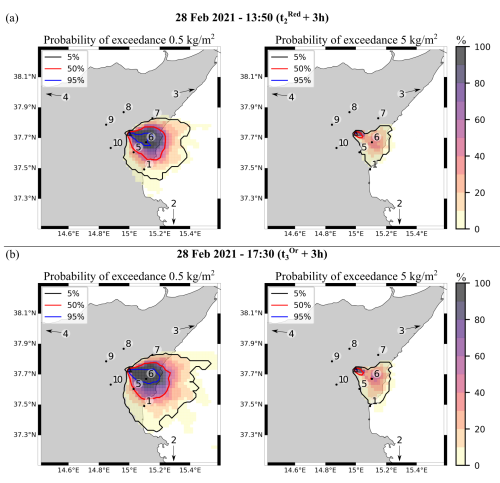Real-time probabilistic assessment of volcanic hazard for tephra dispersal and fallout at Mt. Etna: the 2021 lava fountain episodes

Pardini F., M. de’ Michieli Vitturi, D. Andronico, T. Esposti Ongaro, A. Cristaldi, A. Neri (2023).
Bulletin of Volcanology, 85/6. https://doi.org/10.1007/s00445-022-01614-z
Abstract
Starting from February 2021, Mt. Etna (Italy) experienced a period of intense explosive activity with 17 lava fountain episodes between 16 February and 1 April 2021. During the eruptive cycle, the Istituto Nazionale di Geofisica e Vulcanologia-Osservatorio Etneo (INGV-OE) issued 62 alert notifications known as VONAs (Volcano Observatory Notice for Aviation) to inform the aeronautical authorities about the volcanic activity. We present an automated VONA-based workflow aimed at real-time assessment of the volcanic hazard due to tephra fallout at Mt. Etna. When a VONA reporting tephra emission is issued by INGV-OE, numerical simulations accounting for atmospheric and eruptive uncertainties are automatically initialized to produce probabilistic hazard maps of tephra fallout and atmospheric dispersal. We applied the workflow to three lava fountains that occurred during the 2021 eruptive cycle. To test the modelling results, we compared the simulated ground load with field data, and the extent and position of the simulated volcanic cloud with the observed or estimated volcanic cloud from the Toulouse Volcanic Ash Advisory Center. Overall, we found a good match between simulated and observed quantities (tephra loads and volcanic cloud position), especially when accurate information on eruptive conditions (column height and duration) are supplied by the VONAs. Finally, through a statistical analysis, we found that column height and wind field are fundamental in determining tephra ground accumulation. For this reason, these parameters should be constrained by observational data as accurately as possible when performing numerical simulations, especially in the line of developing operational workflows.


Devi effettuare l'accesso per postare un commento.